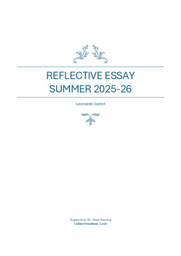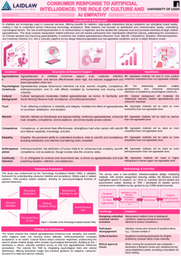LIA Stage 2: Life with AI in Shenzhen--Empowering Underprivileged Students

When the Shenzhen camp finally began, it felt like stepping into the part of the journey I had been imagining since I was 16. This was the camp closest to my original idea: helping underprivileged children discover tools and mindsets for a better future.
But as soon as the program started, I realized that working with students from rural and disadvantaged backgrounds carried challenges that no amount of logistical planning could fully prepare me for.
Two Attitudes, One Classroom
We had around 50 high school students, chosen from nearly 300 applicants. All of them came from underprivileged families, many from rural areas. And from the very first sessions, I noticed a divide.
Half of the students were like sponges — eager, curious, and quick to participate. They asked questions, absorbed new information, and seemed excited about the idea of careers in AI, finance, or design.
The other half were very different. They carried a kind of learned helplessness, a quiet hesitation that went beyond shyness. These students often seemed unsure if learning these new skills or hearing about new career paths would make any difference in their lives. Some avoided eye contact, others held back from participating in group projects. It wasn’t that they weren’t capable — it was that they didn’t seem to believe in the possibility of change.
This was the first time I saw, up close, how social and economic background can shape not just opportunity but also belief in opportunity.
Adapting the Program
I knew we couldn’t simply run the camp as if everyone came with the same mindset. So I reached out for advice. With help from psychology experts, we adapted parts of the curriculum to focus not only on technical and financial literacy, but also on confidence-building and career discovery.
We designed activities that emphasized small wins: teamwork challenges, simple coding exercises, and entrepreneurial brainstorming where even the quietest students could share one idea. Instead of overwhelming them with abstract future possibilities, we broke it down:
-
What is one career you might be interested in?
-
What skill could you start developing today?
-
What would your life look like if you pursued that?
We also brought in speakers who shared their own stories of starting from disadvantaged backgrounds. This made the idea of change realistic and relatable, not just theoretical.
Expanding Horizons
Alongside financial literacy, we introduced elements from Life with AI — sessions on how artificial intelligence is already transforming industries like healthcare, music, and design. For many students, this was their first time hearing about AI in practical terms. To make it less intimidating, we highlighted how AI could be a tool for empowerment, not just a technology for elite programmers.
We also visited Lexin, a company in China that uses AI for credit evaluation in small-scale loans. For these students, seeing how AI could be applied to real-world problems — even those affecting communities like theirs — was eye-opening.
Some students became visibly more engaged after this. They began asking how AI could affect their hometown industries, or whether they could combine financial literacy with AI to help their own families. These were the moments when I felt the camp was truly making a difference.
A Subtle Shift
Not every student transformed overnight. But by the end of the week, I noticed subtle changes. The hesitant students were more willing to participate. Some who had sat silently in the first sessions were presenting ideas in group projects by the end.
When we asked students to reflect, many said they had, for the first time, considered the possibility of a different lifestyle. They didn’t walk away with all the answers, but they walked away with questions they hadn’t dared to ask before:
-
Could I go to university?
-
Could I study AI or finance?
-
Could I change the direction of my life?
That shift — from resignation to curiosity — may seem small, but it is the foundation of change.
My Own Leadership Lesson
For me, the Shenzhen camp was a humbling experience. I had spent weeks perfecting the logistics — hotels, canteen cards, classrooms, brochures — but the real challenge was leading in the space between potential and belief.
I learned that leadership is not just about organizing systems, but about creating environments where people feel safe to dream bigger. And sometimes, the most important role I could play was not to instruct, but to encourage, to invite hesitant voices to the table.
The Shenzhen camp reminded me that technology and finance, while powerful, are not the end goals. The true goal is agency — helping students believe they can shape their futures. Once that belief takes root, tools like financial literacy or AI can actually take hold.
Looking Back
At the end of the week, we held a small closing session. Certificates were handed out, photos were taken, and thank-you speeches were given. But what stayed with me wasn’t the ceremony — it was the image of students walking out of the classrooms with new questions in their minds, questions about futures they hadn’t thought possible before.
That, I realized, was the beginning of Life with AI. Not as a program, not as a camp, but as a mindset: the courage to imagine life differently, in an age where technology can expand what’s possible.





Please sign in
If you are a registered user on Laidlaw Scholars Network, please sign in